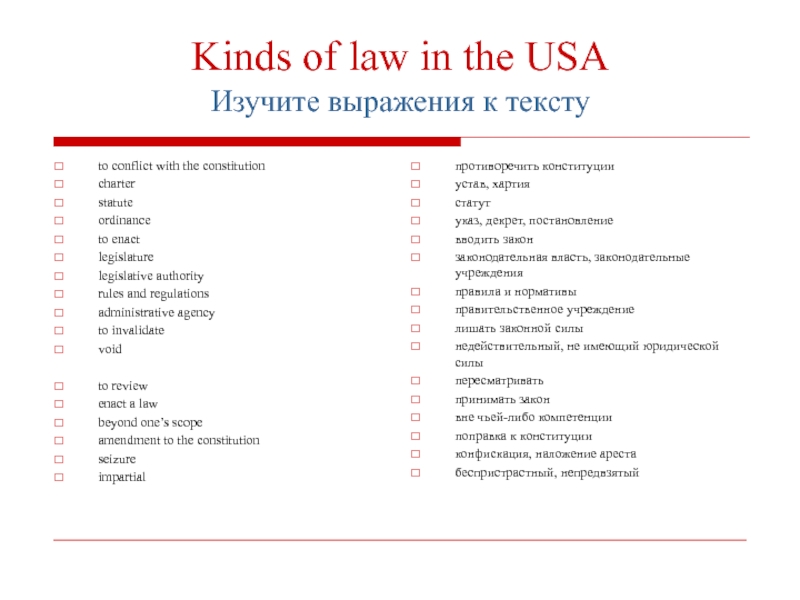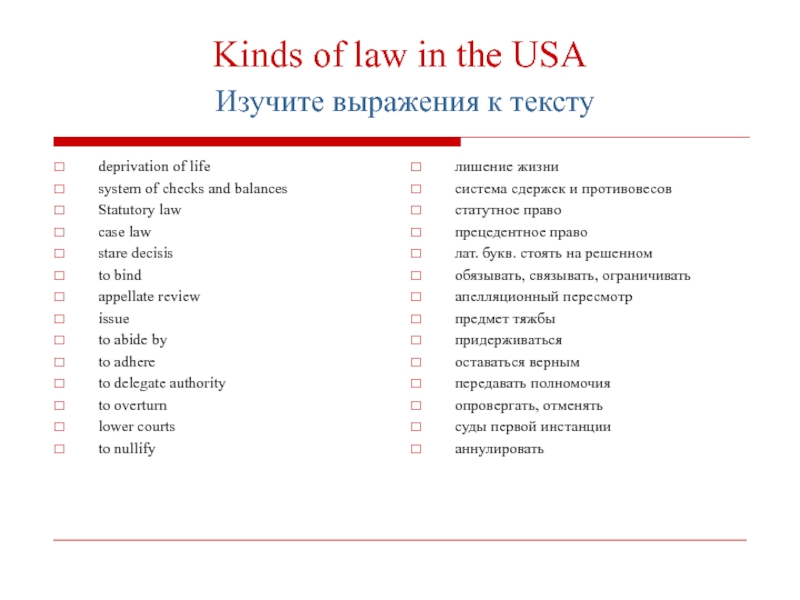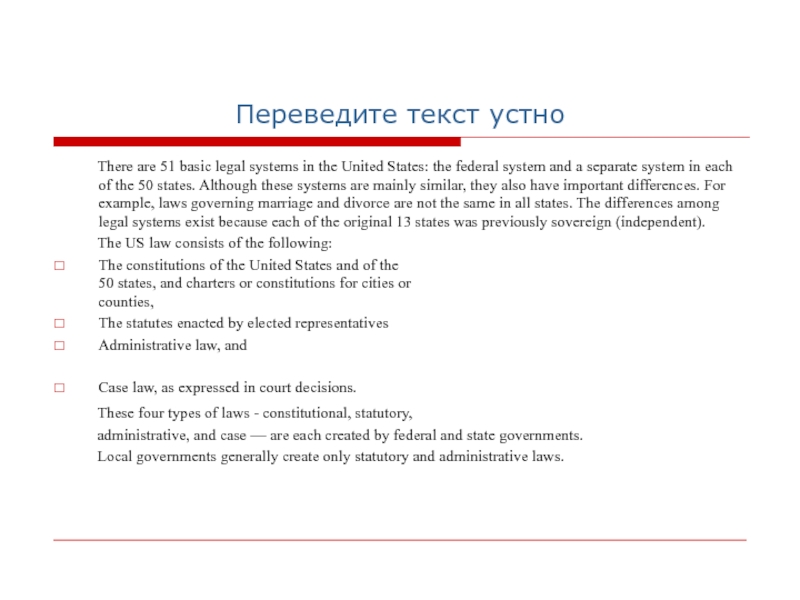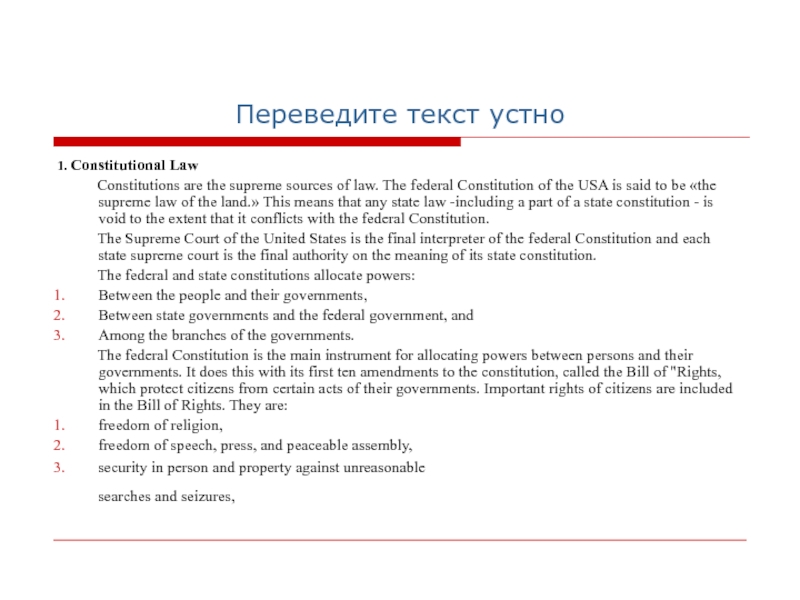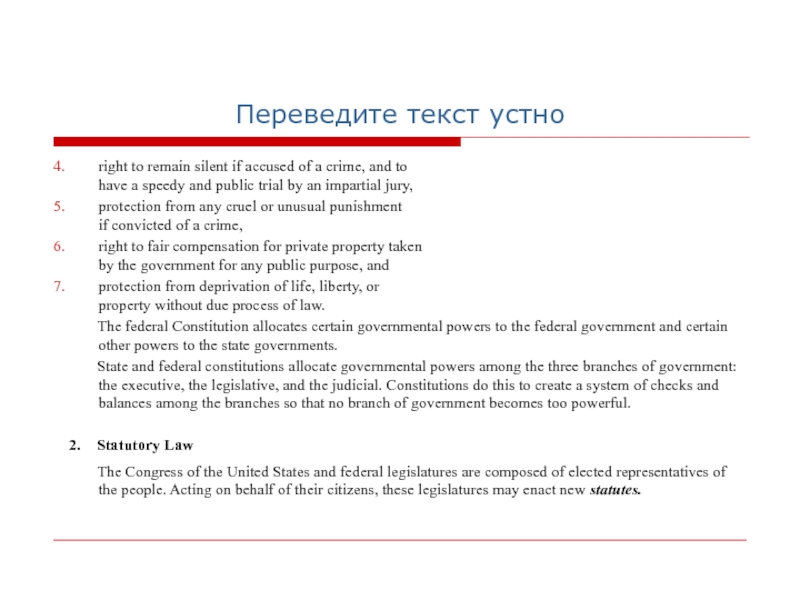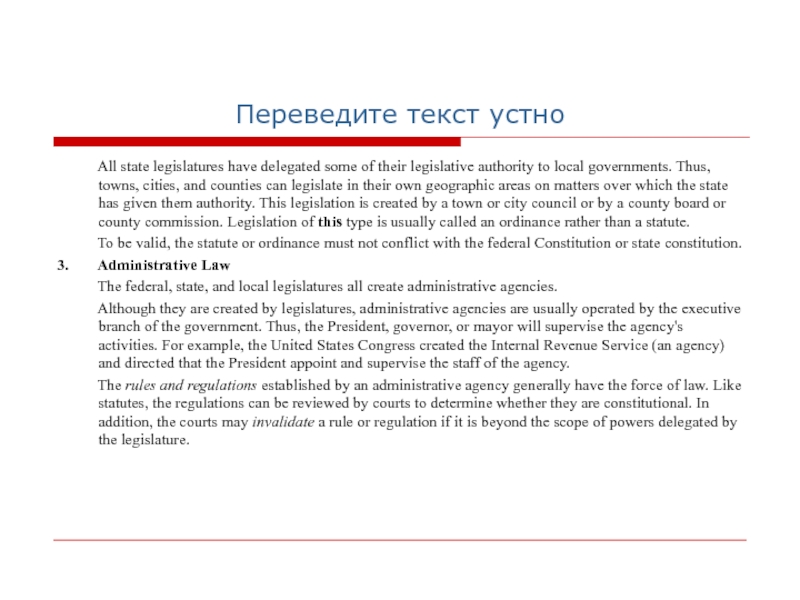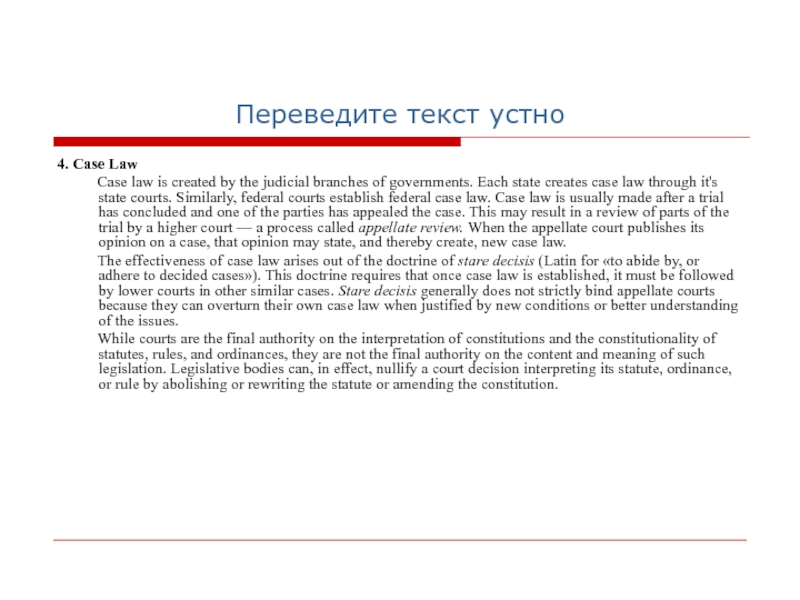charter
statute
ordinance
to enact
legislature
legislative authority
rules and regulations
administrative agency
to invalidate
void
to review
enact a law
beyond one’s scope
amendment to the constitution
seizure
impartial
противоречить конституции
устав, хартия
статут
указ, декрет, постановление
вводить закон
законодательная власть, законодательные учреждения
правила и нормативы
правительственное учреждение
лишать законной силы
недействительный, не имеющий юридической силы
пересматривать
принимать закон
вне чьей-либо компетенции
поправка к конституции
конфискация, наложение ареста
беспристрастный, непредвзятый
